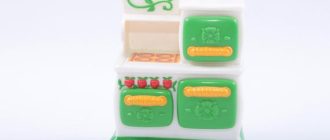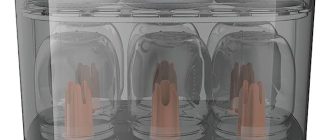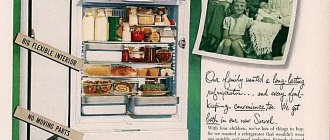Looking for parts?
Enter model number, part number, part type, brand, or part description and press Enter:
These days, most refrigerators come outfitted with an automatic ice maker.
The water inlet valve is a key component of the ice making system. If you are having trouble with your ice maker, the water inlet valve should be the first part you check.

Water Inlet Valve
This is how the ice making system works:
- ice maker calls for ice
- ice maker switch turns off electrical circuit
- solenoid-operated water valve is set in motion
- water begins to flow through the valve and into the ice-cube tray
- water is frozen into cubes
- cubes are dumped into the ice-bin
With passage of time, your ice maker will show signs of aging and not work as efficiently.
The ice cubes might become smaller, change shape (solid chunk of ice instead of individual cubes) or the ice maker will stop working altogether. These are all indications of a possibly malfunctioning water valve.
The water inlet valve is outfitted with a screen to help remove minerals and sediments from the water supply. Over time, minerals begin to build up a layer on the screen, restricting the flow of water and eventually blocking it completely.
Minerals that squeeze through the screen, can make the valve remain in open position, causing the ice-cube tray to overfill. This can happen anywhere, but is especially prevalent in parts of the country were the water is hard.
Another common cause of ice maker failure is a break in the solenoid coil winding, known as an open coil.
As current passes through the coil winding, a magnetic field that opens the plunger valve controlling water flow is generated. When a break in the coil winding stops the current flow, the water inlet valve is prevented from working properly.
The ice maker’s water inlet valve can be inspected and tested in a relatively straightforward way.

Water Inlet Valve Replacement Video
Here is how:
- carefully move refrigerator from the wall
- unplug refrigerator
- to turn water supply off, close the shut-off valve in the copper waterline leading to the valve
- use a screwdriver to remove the rear lower panel from back of refrigerator
- remove the fill tubing from the water valve
- using a wrench, loosen the flare nut on the brass fitting on the inlet side of the valve
- place a small bucket under the valve to catch any water that spills from valve and tubing
- using a screwdriver, remove the screw holding the valve’s mounting bracket to refrigerator cabinet
- pull the valve out of refrigerator and remove the tube on the valve’s outlet
- remove solenoid’s electrical contacts
- test solenoid valve by using a multimeter or a volt-ohm meter
- set the meter to the RX-100 scale
- touch the probes to each terminal on the solenoid coil
- the meter reading should be in the range of 200 to 500 ohms
- if meter needle does not move, this indicates that the coil is bad (you may be able to purchase the coil separately from the valve or have to replace the entire valve)
- if the coil tests OK, this indicates that the inlet filter is probably clogged and needs to be cleaned
- to clean the filter, remove the large brass nut on the inlet side of the valve, and gently pry the screen out with a small screwdriver; clean the screen using an old toothbrush, rinse the filter clean, reassemble the valve and reinstall
- test run the ice maker before reinstalling the back panel on the refrigerator cabinet and check for leaks
- tighten any leaky connections with Teflon tape or a similar product to ensure tight connections
Your ice maker should be working like new!
Repair help, part replacement and maintenance videos, and parts for all appliances at this excellent appliance resource.
![]()













